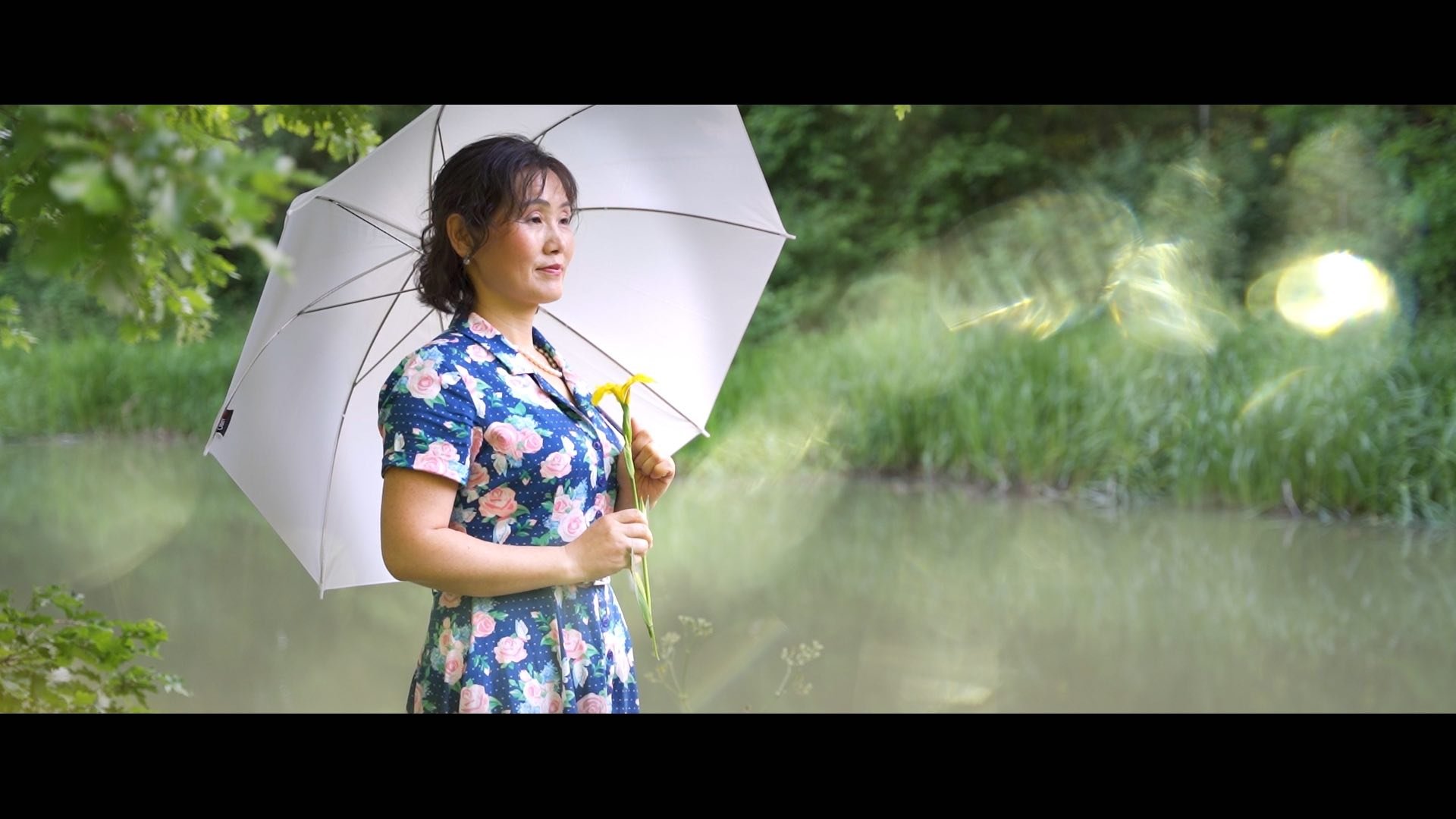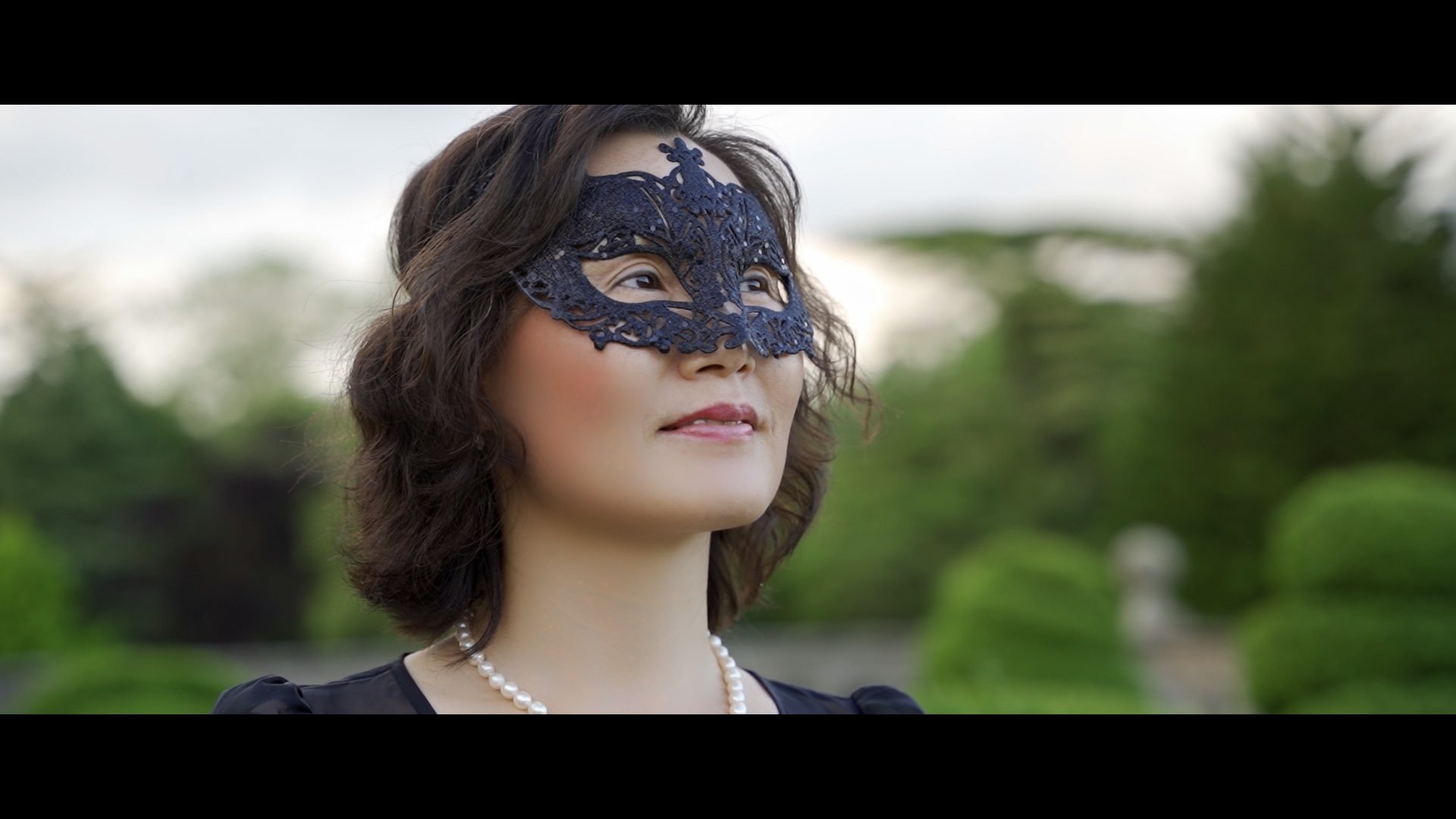
Nigel Cooper details the various challenges, issues, and workarounds he came across while shooting a music video on his Sony A7 III.
I was recently approached by a local female singer to shoot a music video for her so here I will outline how I got from concept to completion, the equipment used and some of the problems I ran into. At the end of the article you’ll find a link to view the final music video.
This particular artist had no idea what she wanted, just that she wanted a music video, so it was down to me to come up with ideas. Being a Chinese singer, singing in Chinese, I asked for a translation of the lyric sheet to get an idea of the song’s theme. Turned out to be a lovelorn kind of ballad; she sings about how the clouds are now full of rain and the wind blows hard, etc. The song smacked of outdoor nature locations, of which I had an idea for two perfect locations in Cambridgeshire, UK, where I live. For this slow ballad I wanted the singer to be walking alongside a river, sitting in a poppy field (or similar) and generally walking around in picture postcard locations.
Being a creative sort of guy I wanted to shoot the entire video in slow motion, while retaining perfect lip sync. To achieve this one exports the track at double the speed (while retaining normal pitch) and then has the artist mime and dance to that song. This means she would have to move and sing at double the speed while I shot at 50fps, with the intention of slowing it down to 25fps in DaVinci Resolve so I could match it up with the regular speed track. I first saw this technique in a video by The Police called ‘Wrapped Around My Finger’ where Sting danced around some candles in a church (look it up if you don’t believe me).
Fake news
 However, after a quick test shoot the singer said it felt fake and she was not up for it. Even though I explained that movies and music videos are all an illusion, everything is fake. Even the song (which I recorded and produced in Logic Pro) is fake by the time I added reverb, delay, compression, EQ, and so on an so forth to her voice. Without which everybody would sound, well, ‘normal’, like one does while singing while making the dinner.
However, after a quick test shoot the singer said it felt fake and she was not up for it. Even though I explained that movies and music videos are all an illusion, everything is fake. Even the song (which I recorded and produced in Logic Pro) is fake by the time I added reverb, delay, compression, EQ, and so on an so forth to her voice. Without which everybody would sound, well, ‘normal’, like one does while singing while making the dinner.
I did, however, shoot several shots in slow motion for b-roll, and it turned out that when she saw the final video she liked the slo-mo shots the best — go figure. The moral of this story is if you have a creative idea push it through as the artist/band generally don’t understand the process of video production. Trust me, they will love the end result, just don’t try and explain to them what you’re doing at the shooting stage or they will want to add their ideas. There is only ‘one’ director for a reason.
The video was shot on my Sony A7 III with a Sigma 24-70 F2.8 lens at 1920x1080 at 25fps. I don’t shoot 4k or 6k as I can’t see the point in wasting storage space, not to mention the strain on the computer while editing the footage when most people will be watching on a mobile phone, iPad or laptop anyway.
The only other kit I used was a Libec TH-X tripod, a Feelword F5 hot-shoe mounted monitor and the Sony battery grip for extra shooting time. No audio equipment was necessary as she was going to be miming to my exported track on a boombox, which would be hidden in the grass out of shot. The audio would be picked up from my Sony A7 III’s built-in mic, which I’d cranked up to a high level to pick up the audio from said boombox. The quality of this location audio was not important as I was only going to be using it for a waveform to match up to the master track that I’d exported from Logic Pro and dumped onto the timeline in Resolve, all ready and waiting.
Creative? Mistake…
After I nailed my shot-list and ticked them off I thought I’d try a few other creative shots – I wish I hadn’t. I thought I’d try some hand-held shots walking backwards while the singer walked towards me. I made the mistake of thinking the Sony A7 III’s built in IBIS was a substitute for a gimbal - ha, not a hope. It was awful and is not designed for video, it’s designed for hand-held stills photography to avoid camera-shake, period. So, the shaky shots went in the bin, except one, which made it into the final cut and I’m sure you’ll notice it.
The other shot I tried was a zooming pull-back shot. Again, big mistake. The Sigma lens is a stills lens and trying to zoom during video doesn’t work as, unlike a pro video lens, there is no zoom rocker control and the throw of the zoom ring is just too darn small and jerky. This yielded jerky unusable zoom shots and, again, one made it into the final video and, again, you’ll notice it.
Back in my days of using high-end shoulder-mounted cameras with pro lenses I rarely did zoom shots as I always considered them to be amateurish, which is why you never see zoom shots in professionally produced Hollywood movies. We have thousands (hundreds with smaller mirrorless cameras) of pounds of grip equipment to allow us to move into and through a scene for a reason, it looks a sight better than a naff zoom shot. I was surprised (and disappointed) at myself for even bothering with a zoom shot.
The days of shooting were far from ideal, sun high in the sky in early June. Even though I shot it over three days during the ‘magic hour’ the low sunlight was still harsh so I had the singer hold one of my stills photographic shoot-through umbrellas to soften the light on her face.
As the song has a dark and melancholy theme I thought a sub-plot would be a good idea. For this I had the singer wear a theatrical face mask that I had lying around – Amadeus meets Farinelli, to go with a black dress that I had her dig out.
One shot looked a little flat (not in a ‘grading’ way) so I pulled a yellow flower out of the ground and physically held it in front of the camera lens, just off to the side, while panning to give the shot more depth - it worked a treat.

In DaVinci Resolve I added some ‘light leak’ effects (above) that I’d created myself using a small crystal bowl held about an inch from my camera lens while using my iPhone X’s built-in LED light. Just search YouTube for ‘Light Leaks for Video’ and you’ll soon get the idea of what they are. I also used the ‘watercolour’ effect in Resolve for the intro and outro as well as the skin softening tool, which took a while to motion-track and render out and it is a little obvious one shot in particular, where her skin look like a Barbie Doll. But I didn’t mind (and neither did she) as I thought it added to the romantic element of the song.

Finally, in DaVinci Resolve I went to Timeline/Output Blanking and chose 2.39 (the Hollywood movie standard) for the black bars for a more ‘Cinematic’ look. This also allowed me to re-frame any given shot up/down using the y-axis - handy.
Have a look at the finished video (as well as me talking through some of the points mentioned above) below.
Tags: Production

Comments